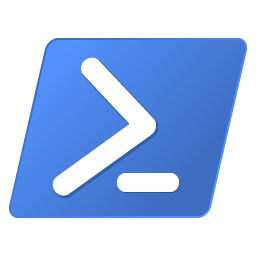PowerShell Team
Automating the world one-liner at a time…
Latest posts

What's new in DSC Resource Kit
It’s been another busy month and we’ve seen lots of enthusiasm from many of you to help improve the DSC Resource Kit. In only the last couple of weeks we’ve merged 90 pull requests, 8 new resources have been added to 4 modules (xDefender, xExchange, xWebAdministration, xWindowsUpdate) and another 15 resources across 13 modules were updated! That brings the total number of resources in DSC Resource Kit to 220! We are also very happy to see incoming feedback in the form of new GitHub issues and want you to know that we are looking at all of them - since our last update, 18 issues were addressed an...

Windows Management Framework (WMF) 4.0 Update is coming your way …
Updated 05/03/2016 – On Jan 19th 2016, we had published the Windows Management Framework (WMF) 4.0 update packages for Windows Server 2012 (KB3119938), Windows Server 2008 R2 SP1 (KB3109118), and Windows 7 SP1 (KB3109118) . At this time, these update packages are only available by request through the aforementioned links. See WMF 4.0 Update blog for additional details. As part of the November 2014 Update Rollup (KB3000850) for Windows RT 8.1, Windows 8.1 and Windows Server 2012 R2, we substantially improved stability, diagnosability, and reliability of PowerShell Desired State Configuration (DSC). We also enhance...

Azure DSC Extension v2.1 released
NOTE: For information on OS support, and other features, please refer to our release history. Today we released version 2.1 of the Azure DSC Extension, with a bug fix for ARM deployments. The bug we fixed would produce this error message in some ARM deployments: “File lock (C:\Packages\Plugins\Microsoft.Powershell.DSC\1.10.1.0\bin\..\DSCWork\ExtensionHandler.Lock.dsc) exists: another instance of the extension is already running." The error would occur right after reboot. If you see this error message in your deployments we recommend upgrading to version 2.1. Please feel free to reach to us posting comment...

Welcoming the new home of PowerShell
It's been our intent for a while now to establish a single home of PowerShell that reflects the myriad of properties we have spread across the web. Between the Gallery, our blog, Connect, our GitHub repositories, and TechNet documentation, PowerShell is in a lot of places. Today we are proud to announce the launch of the new online home of PowerShell: https://microsoft.com/powershell We've worked hard to establish a new online home for PowerShell and our first release gives users a centralized portal for official PowerShell resources, content, and documentation. The PowerShell homepage modernizes our online bra...

Introducing Azure Resource Manager cmdlets for Azure PowerShell DSC Extension
Last August we introduced Azure Service Management (ASM) cmdlets for PowerShell Desired State Configuration (DSC). Through these cmdlets released in the Azure PowerShell SDK, you can upload and apply a PowerShell DSC Configuration to an Azure VM. Now, we are introducing new set of cmdlets for deploying DSC Extension with Azure Resource Manager (ARM). You can read more on using Azure PowerShell with ARM here If you already have the Azure PowerShell SDK installed, you will need to update to version 0.9.5 Key differences in ASM and ARM cmdlets Let’s look at each cmdlet and the ...

Validate PowerShell DSC Debug
This is part five of a blog series introduced in Validate the new features of PowerShell DSC. New Capability DSC has a new debugging mode that helps with troubleshooting by making it possible to interact with scripts being run by DSC, as they are being applied. When this mode is enabled, as the machine applies the configuration, progress will stop at the first script action to wait for a remote connection to open. Once connected, the person doing the troubleshooting can interact with the session as well as use breakpoints to debug. What is the purpose of this feature? Customers have requested ad...

Validate PowerShell DSC WaitFor
This post is part four of a blog series introduced here: Validate the new features of PowerShell DSC. New Capability WaitFor is a new set of built-in configuration resources. Including the WaitFor resources in a configuration tells the configuration target machine that it should communicate with the Local Configuration Manager on a remote machine to verify that the remote has returned success, before the target machine continues its deployment. The WaitFor resources need to know which nodes to check, which DSC resource must complete successfully, how often to check, and how long to wait between checks. W...

Validate PowerShell DSC Partial Configurations
This post is part three of a blog series introduced in Validate the new features of PowerShell DSC. New Capability DSC now has the ability to merge partial configurations into one configuration for management. What is the purpose of this feature? Customers have told us that in some cases, multiple teams contribute to a configuration. It can be organizationally challenging to manage a collective configuration. Customers want to be able to allow individual teams to author the portions of the configuration for which they are responsible, and then use the DSC Local Configuration Ma...

Registration is Now Open to Publish on PowerShell Gallery
We are excited to announce that, as of today, the PowerShell Gallery will accept registration from any users who wish to publish PowerShell modules and share their work with the world. For the past year, the PowerShell Gallery has been slowly adding content from our closest community contributors, most of whom are Most Valuable Professionals (MVPs) and internal Microsoft contributors. While we were building the basic features of the PowerShell Gallery, we restricted the set of people who could publish new modules, and required an approval step before allowing users to register. This approach provided the PowerShe...
